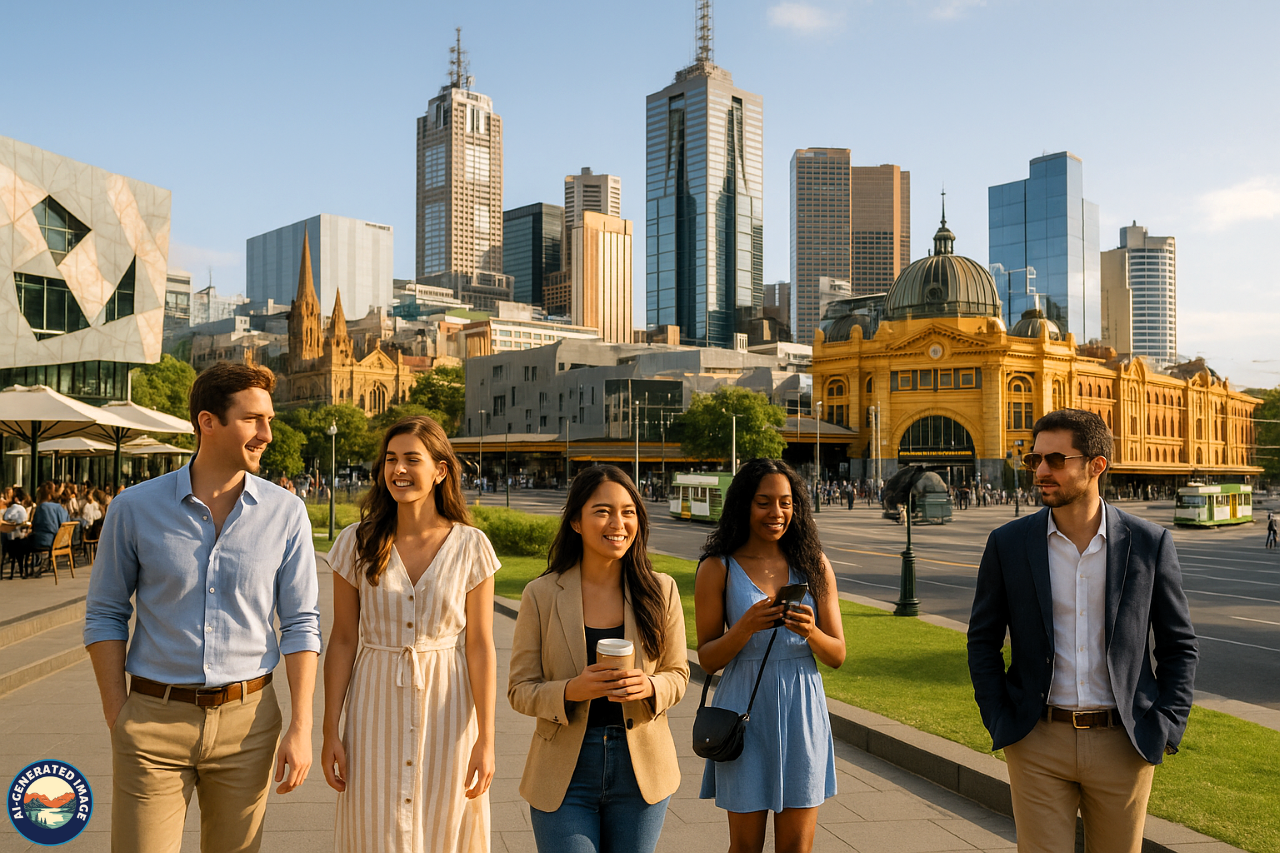Introduction
Melbourne, the vibrant capital of Victoria, is one of Australia’s most beloved cities. Renowned for its creativity, multicultural atmosphere, and exceptional quality of life, Melbourne offers a seamless blend of historical elegance and modern sophistication. From art-covered laneways and grand architectural landmarks to innovative cuisine and dynamic festivals, the city brims with energy and cultural flair.
This in-depth travel guide explores everything Melbourne has to offer—from top attractions and diverse neighborhoods to culinary experiences, artistic treasures, and scenic escapes. Whether you’re planning a short visit or an extended stay, this guide will help you make the most of your time in Melbourne.
Brief History
Melbourne’s history dates back to 1835 when European settlers founded a township on the banks of the Yarra River. Long before colonization, the area was inhabited by the Wurundjeri people of the Kulin Nation, whose deep-rooted cultural and spiritual connection to the land spans over 40,000 years.
The discovery of gold in the 1850s brought a wave of prosperity, transforming Melbourne into one of the wealthiest cities in the world during the Victorian era. The city’s architecture still reflects this golden age, with majestic buildings, broad boulevards, and elaborate Victorian facades. Over time, waves of immigration from across the globe have made Melbourne a richly diverse and culturally inclusive city.
Top Attractions
Federation Square
Federation Square sits at the heart of Melbourne’s central district. Known for its striking modern architecture, it serves as a cultural gathering place and hosts numerous public events. It houses important institutions such as the Australian Centre for the Moving Image (ACMI) and the Ian Potter Centre of the National Gallery of Victoria. With its constantly changing calendar of exhibitions, live performances, and outdoor screenings, it’s a dynamic space to explore.
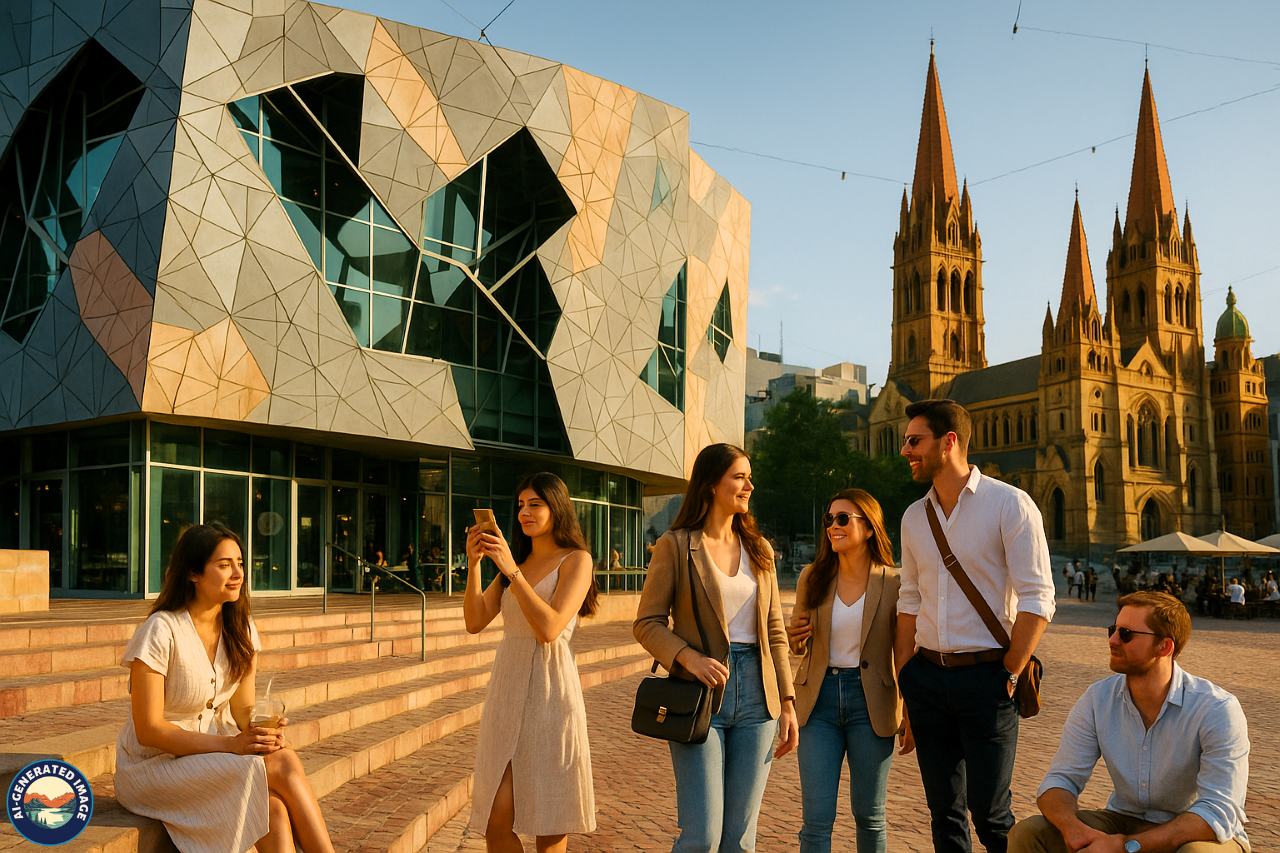
Flinders Street Station
Flinders Street Station is Melbourne’s most iconic building. Its bright yellow facade, green dome, and antique clocks are emblematic of the city. Opened in 1910, it continues to serve as a busy transportation hub. It’s steps are a popular meeting place for locals and a great starting point for exploring nearby attractions.
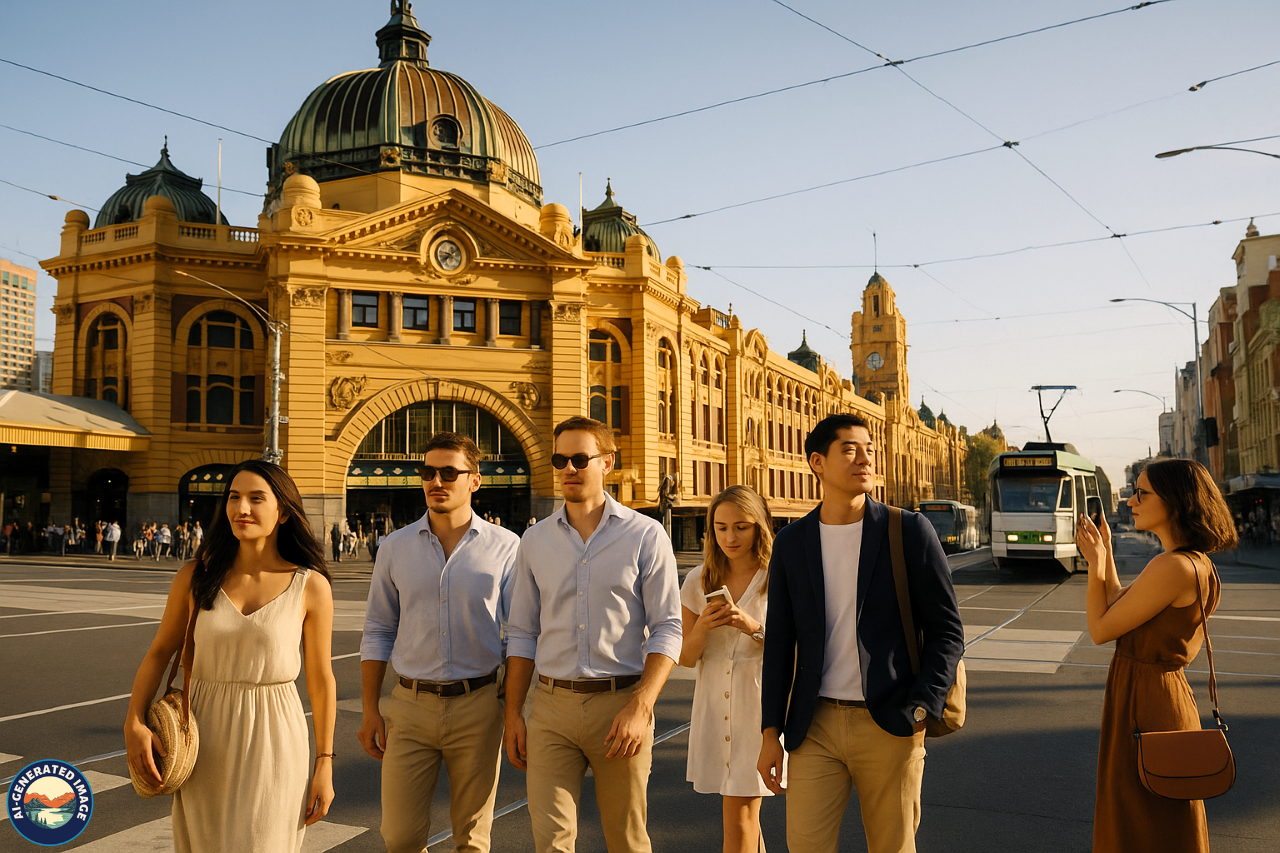
Royal Botanic Gardens
A short walk from the city center, the Royal Botanic Gardens offer a serene escape in the midst of urban life. Covering over 90 acres, the gardens boast more than 8,500 species of plants, tranquil lakes, and themed walking trails. It’s a favorite spot for picnics, yoga, and guided nature tours.
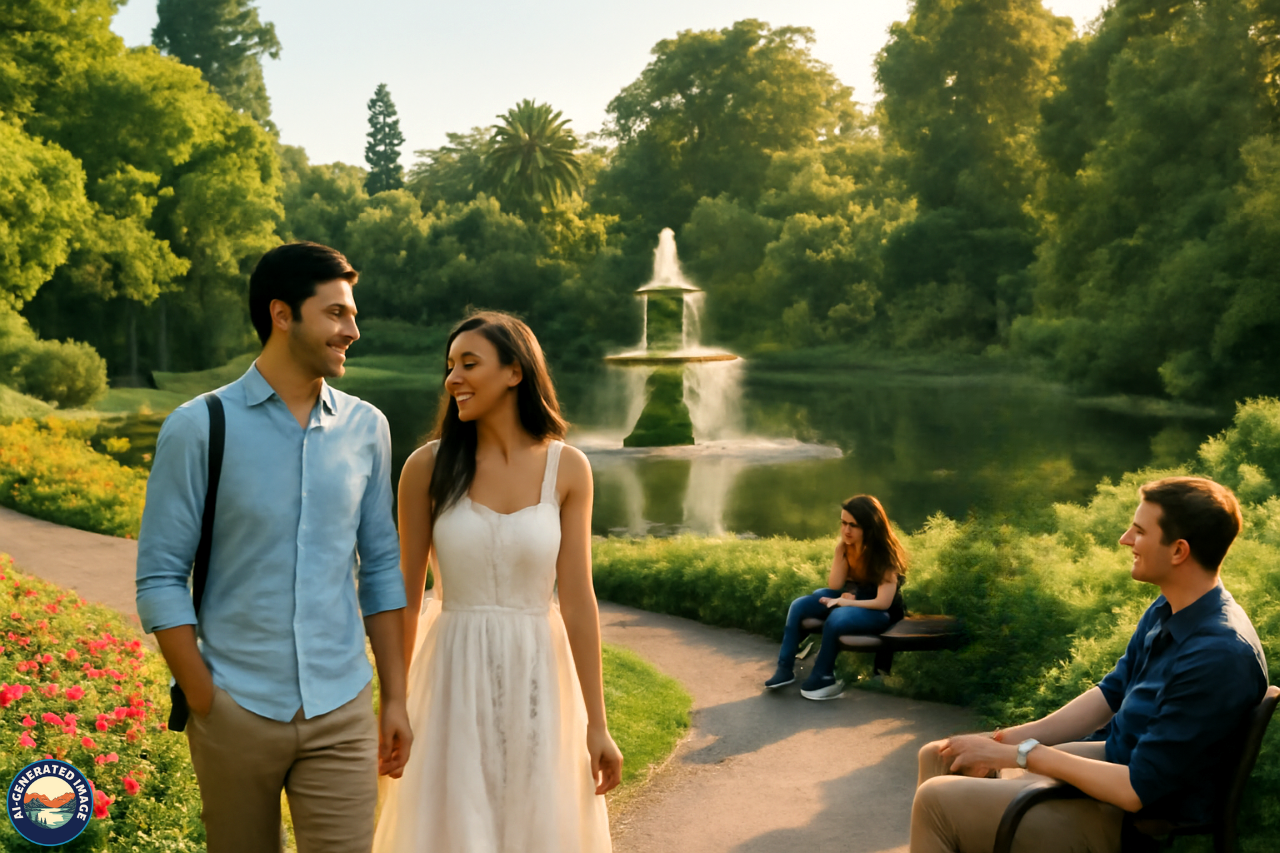
Melbourne Cricket Ground (MCG)
The MCG is more than a stadium—it’s a national treasure. Hosting major events such as the AFL Grand Final, international cricket matches, and concerts, it is one of the largest stadiums in the Southern Hemisphere. Visitors can also explore the Australian Sports Museum located within the venue.
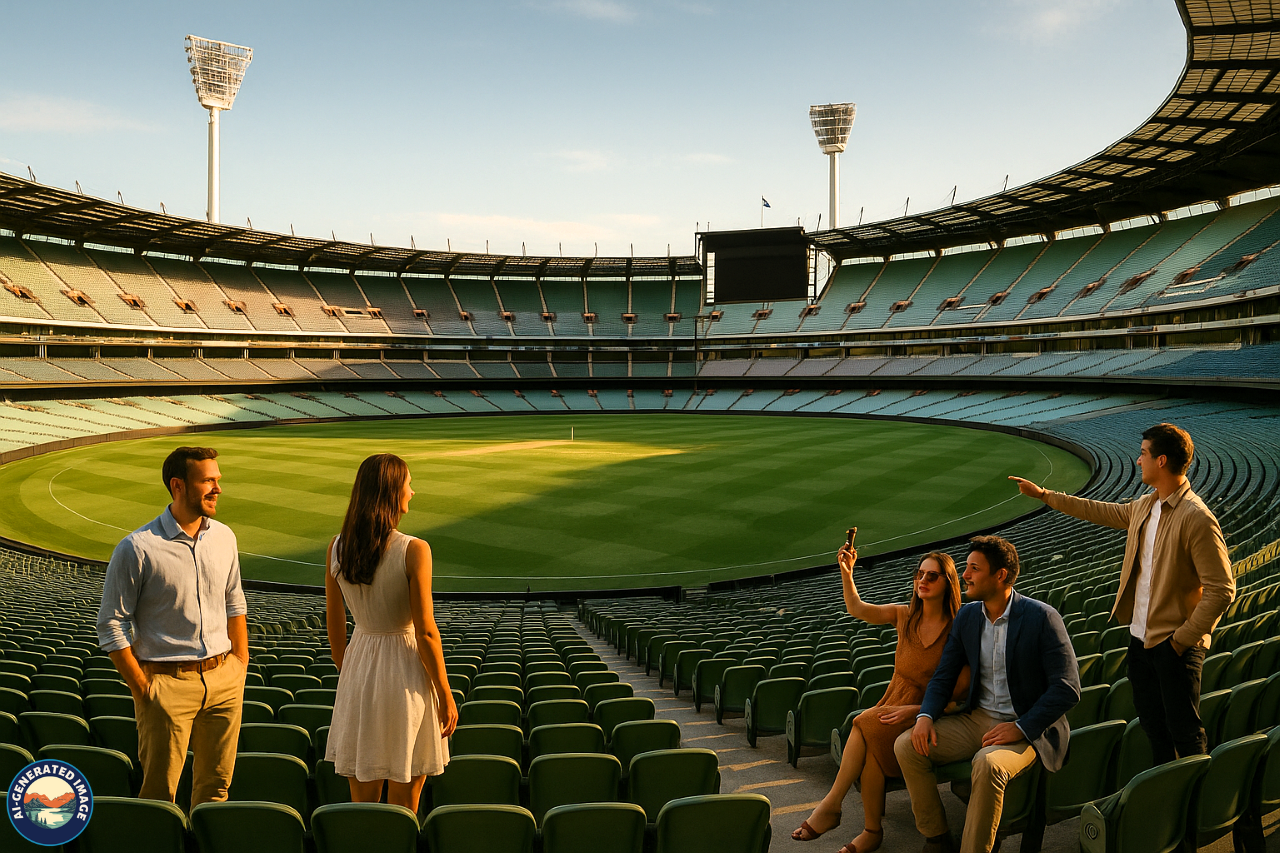
Eureka Skydeck
Located in Southbank, Eureka Skydeck offers panoramic views from the 88th floor of the Eureka Tower. For thrill-seekers, “The Edge”—a glass cube that extends from the building—provides an exhilarating experience, literally placing you above the city skyline.
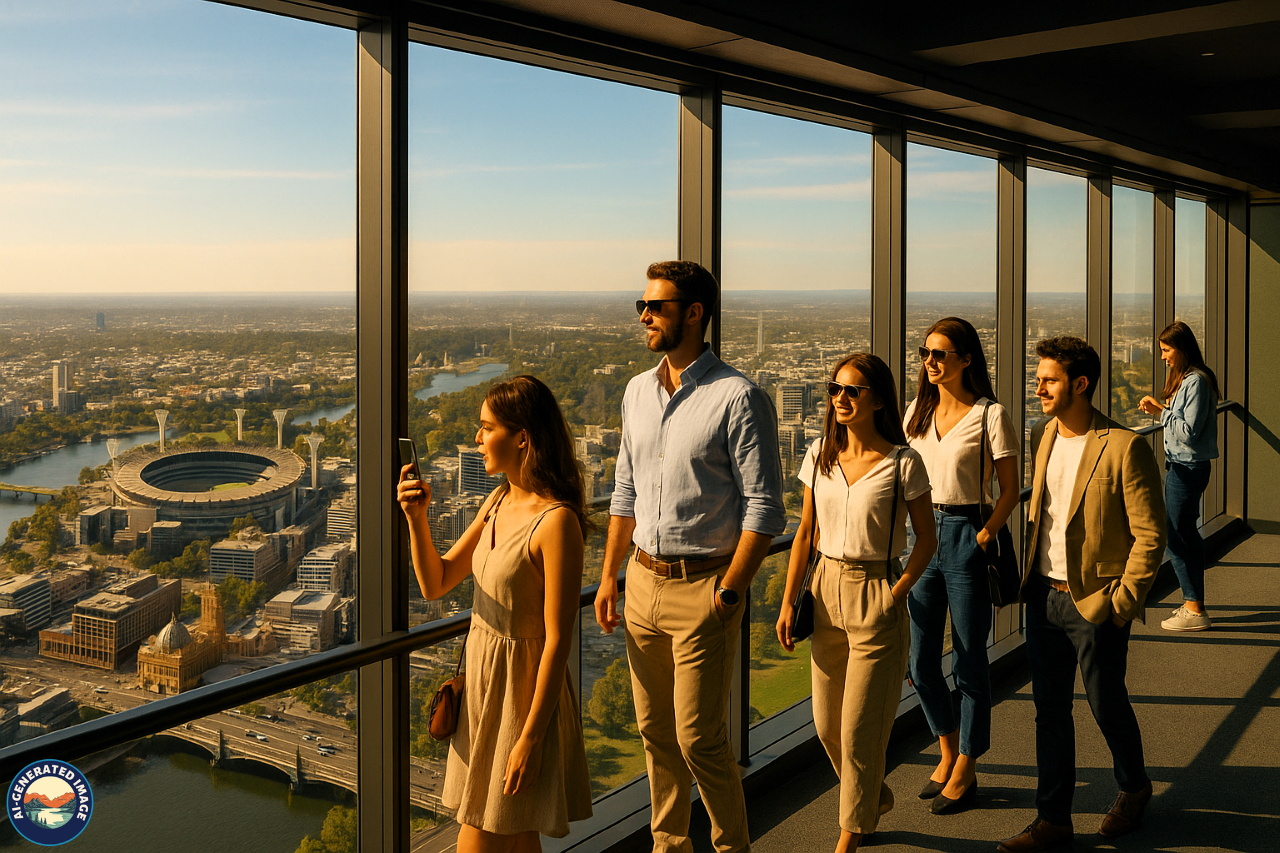
Explore the Neighborhoods
Fitzroy & Collingwood
Known for their bohemian energy and artistic culture, Fitzroy and Collingwood are perfect for discovering Melbourne’s creative pulse. These neighborhoods are filled with street art, vintage boutiques, artisan cafes, and vibrant bars. Brunswick and Smith Streets are must-visit for those seeking unique, offbeat experiences.
St Kilda
St Kilda offers a refreshing seaside escape with a laid-back vibe. Highlights include the iconic Luna Park amusement park, St Kilda Pier (home to a colony of little penguins), and lively cafes on Acland Street. It’s also a fantastic place to watch the sunset over Port Phillip Bay.
Carlton
Carlton is Melbourne’s “Little Italy,” known for its strong Italian heritage and culinary scene. Lygon Street features some of the city’s best Italian restaurants, gelaterias, and espresso bars. The area also houses the Royal Exhibition Building and Melbourne Museum, both surrounded by the picturesque Carlton Gardens.
Southbank
Southbank is a sophisticated district along the Yarra River, home to luxury hotels, riverside dining, and cultural institutions. Visit the Crown Entertainment Complex, explore the National Gallery of Victoria, or enjoy a stroll along the vibrant promenade.
The Food Scene
Melbourne’s food culture is one of the most diverse and celebrated in Australia. With influences from Asia, Europe, Africa, and the Middle East, the city’s culinary offerings are a feast for the senses.
Brunch is a beloved ritual, with cafes serving creative dishes such as smashed avocado, ricotta pancakes, and expertly brewed coffee. Head to laneways like Degraves Street or Hardware Lane for cozy cafes and intimate atmospheres.
Queen Victoria Market is a food lover’s paradise. Offering fresh produce, gourmet products, and global street food, it provides a true taste of Melbourne’s multiculturalism.
Some must-try local dishes include:
-
Chicken parmigiana (“parma”)
-
Meat pies with gravy
-
Flat white coffee
-
Lamingtons (sponge cakes coated in chocolate and coconut)
Arts, Culture, and Festivals
Melbourne thrives on creativity and cultural expression. It’s a city where art is found not only in galleries but on streets, stages, and public spaces.
Street Art
Melbourne’s laneways are world-renowned for street art. Hosier Lane is the most popular, offering ever-changing murals and graffiti. Other lanes like ACDC Lane and Duckboard Place also showcase bold, politically and socially inspired artworks.
Museums and Galleries
-
National Gallery of Victoria (NGV):
-
Features an extensive collection of local and international art.
-
Melbourne Museum:
-
Explores Australia’s natural history, Indigenous culture, and science.
-
Arts Centre Melbourne:
-
Hosts ballet, opera, concerts, and live theatre throughout the year.
Major Festivals
-
Melbourne International Comedy Festival:
-
Attracts performers from across the globe.
-
Moomba Festival:
-
A free, family-friendly event with parades, water skiing, and fireworks.
-
White Night:
-
Transforms the city into an illuminated art gallery for one night each year.
Nature and Day Trips
Great Ocean Road
A journey along the Great Ocean Road is one of Australia’s most scenic drives. Admire dramatic cliffs, lush rainforests, and coastal formations such as the Twelve Apostles. Ideal for a day trip or a multi-day adventure.
Yarra Valley
Just an hour’s drive from Melbourne, the Yarra Valley is known for its wine, cheese, and chocolate. Explore vineyards, attend tastings, or enjoy hot air balloon rides over rolling hills.
Phillip Island
This island getaway offers a blend of nature and wildlife. Watch the famous Penguin Parade at dusk, visit the Koala Conservation Centre, or surf the island’s pristine beaches.
Dandenong Ranges
Ideal for nature lovers and families, the Dandenongs feature forested trails, quaint villages, and the historic Puffing Billy steam train. The cool mountain air and vibrant gardens make it a perfect year-round retreat.
Shopping
City Centre & Arcades
Bourke Street Mall and Emporium Melbourne are major retail hubs, offering everything from local brands to global fashion labels. The Block Arcade and Royal Arcade provide elegant settings for boutique and specialty shopping.
Trendy Neighborhoods
-
Chapel Street:
-
Known for fashion-forward clothing and homeware.
-
Brunswick Street:
-
Offers second-hand stores, record shops, and artistic finds.
-
Prahran Market:
-
A premium destination for gourmet food lovers.
Queen Victoria Market
This historic market offers more than just groceries—it’s a one-stop shop for souvenirs, street food, clothing, and artisan products. Night markets are particularly popular in the summer.
Getting Around Melbourne
Melbourne’s transport system is easy to navigate and visitor-friendly.
Trams
Melbourne boasts the world’s largest urban tram network. The Free Tram Zone in the central business district is ideal for tourists exploring downtown attractions.
Trains and Buses
The suburban train network and bus services connect the city to the outer suburbs. Purchase a Myki card to access all public transport modes seamlessly.
Walking and Cycling
The city’s flat layout and numerous footpaths make walking convenient. Cyclists can enjoy dedicated bike lanes and scenic routes along the Yarra River or through local parks.
Best Time to Visit
Melbourne’s weather is famously changeable, but every season offers something unique:
-
Summer (Dec–Feb):
-
Best for festivals, beaches, and outdoor dining.
-
Autumn (Mar–May):
-
Enjoy vibrant fall colors and milder temperatures.
-
Winter (Jun–Aug):
-
A great time for museums, cosy cafes, and snow trips to nearby ranges.
-
Spring (Sep–Nov):
-
Ideal for floral displays, horse racing events, and walks in blooming gardens.
Practical Tips for Travelers
-
Currency:
-
Australian Dollar (AUD)
-
Language:
-
English
-
Time Zone:
-
Australian Eastern Standard Time (AEST)
-
Tipping:
-
Not expected but appreciated for good service
-
SIM Cards:
-
Widely available at airports and convenience stores
-
Public Transport App:
-
Use the PTV app for real-time transport information
-
Emergency Number:
-
Dial 000 for police, fire, or ambulance services
Conclusion
Melbourne is a city of contrasts and creativity—a place where history meets innovation, and tradition coexists with trendsetting ideas. Whether you’re drawn to its cultural offerings, culinary delights, sporting heritage, or scenic escapes, Melbourne welcomes you with warmth and discovery.
From cobblestone lanes to cutting-edge galleries, this city invites exploration at every turn. It’s not just a destination—it’s an experience that leaves a lasting impression.
FAQs
Is Melbourne safe for tourists?
Yes, Melbourne is considered one of Australia’s safest cities. Use common sense and stay aware of your surroundings as you would in any major city.
What is the best way to get around Melbourne?
The tram system is efficient and iconic. The Free Tram Zone makes navigating the city center simple and cost-effective.
How many days should I spend in Melbourne?
A minimum of 3–5 days is recommended to explore the city and take one or two nearby day trips.
Is Melbourne affordable for tourists?
Melbourne can be visited on any budget. There are numerous free activities, budget accommodations, and affordable eateries throughout the city.
What sets Melbourne apart from other Australian cities?
Melbourne’s rich cultural scene, thriving food culture, and love for art and sport make it a uniquely vibrant and enriching destination.

